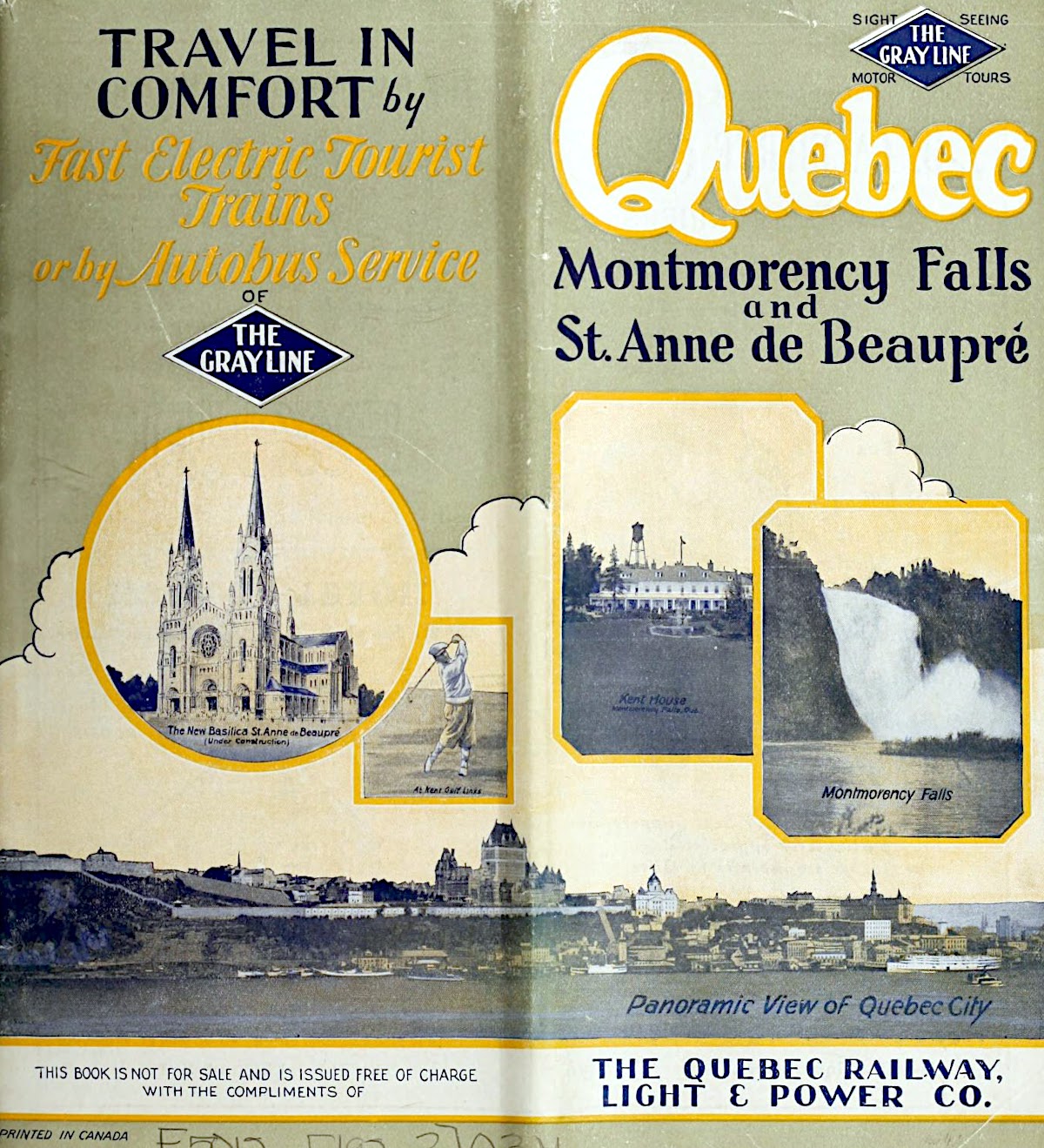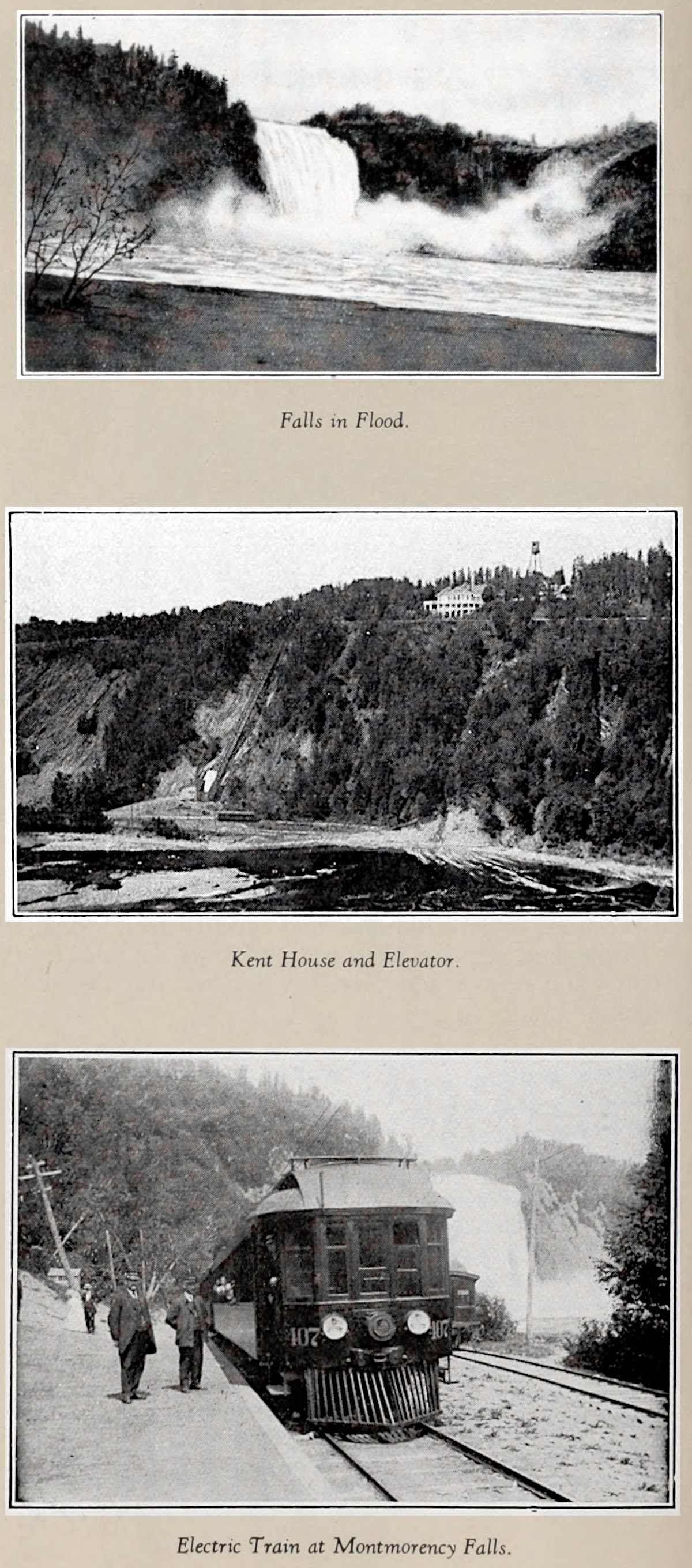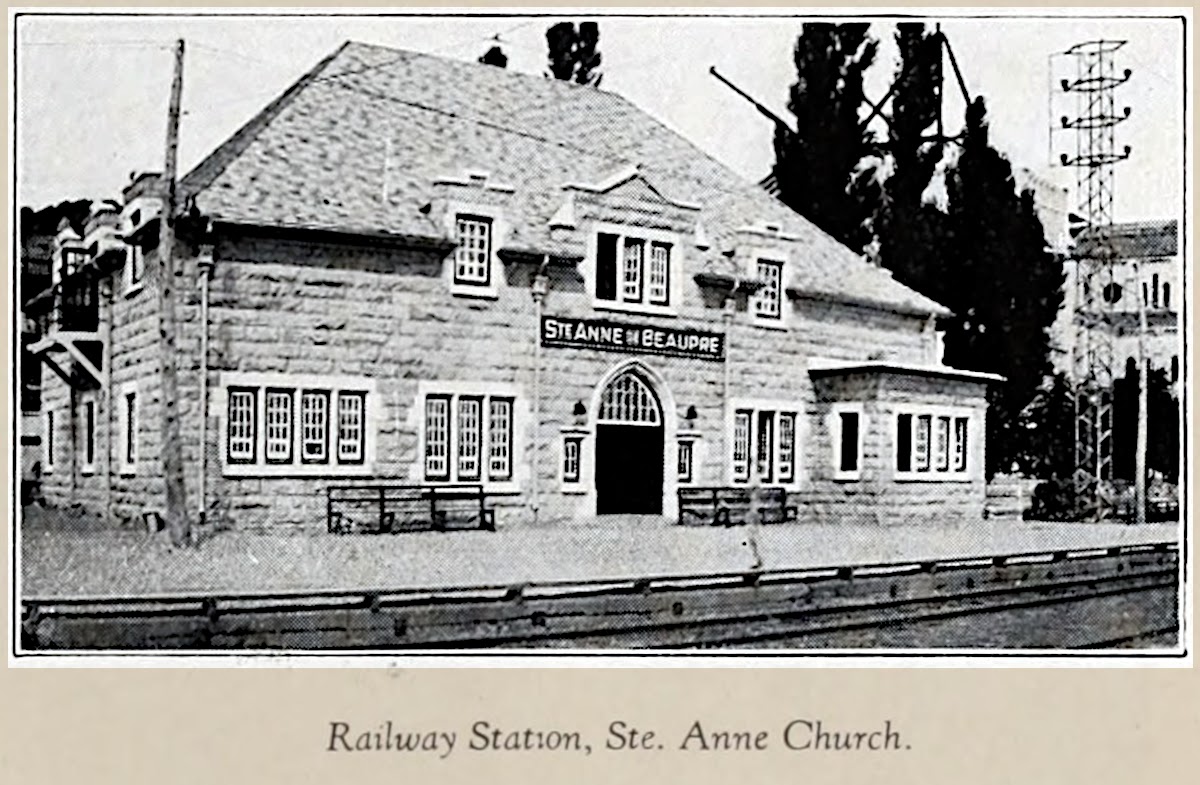The link for this very thorough tour book from the early 1920s for the Quebec Railway Light & Power was sent to me by Jim Christie. The link to this 100-page document at archive dot org is included at the end of the post.
I read it cover to cover and decided to pull out and present interesting images showing the railway which don't always appear in recent published works ... in case you find them historically interesting. There are also sundry ads and 'tourist attraction' information included below.
In the tour book, there is a thorough cataloguing of the precious and historical items held and/or on display at the Basilica of Sainte-Anne-de-Beaupré (henceforth, 'the Basilica').
I was particularly interested in the chronology of the establishment of the original church and how it was related to the first documented miracles. I was surprised to find that the Basilica also held corporeal relics of St Anne. One assumes that Roman Catholic officials worked closely with the publishers to ensure that the information was correct.
If the previous paragraph is unclear ... at the end of this post is the tour book's explanation on who St Anne was and how things came to pass. In terms of understanding the social history of Quebec and Canada, these paragraphs are quite revelatory.
Above: Under its passengers, you will recognize the stepped observation streetcar of classic design - a type which was also used in Montreal.
Below: In Montreal, during Grade 5 History, we were very sympathetic on learning of Champlain's 1635 date of death
because he wouldn't be able to enjoy his presents!
Below: Key dates in the history of the Basilica.
Above and Below: Whatever freight, passenger and commuter services the QRL&P may have provided ... it was certainly well-organized for tourism. The map below shows a secondary line up to Kent House (see the line drawing of the resort far below) and the line connecting Kent House and the Falls represents the single-car inclined railway which linked them.

Above: The view looks up the St Lawrence River toward Quebec City. The Montmorency River flows right to left in the photo's foreground. At the extreme right, is the tail of the wye which leads to the falls and the inclined railway. The station is the two-storey dark building with a peaked roof where the west leg of the wye meets the main line.
Below: An exceptional view of the Falls. Almost invisible from below, an overflow dam (presumably to maintain a turbulence-free head for hydro-electric generation) crosses the Montmorency River just above and behind the Falls' natural edge.
Above: This was the best resolution of rolling stock details I could get.
* * *
Information Pertaining to the Basilica ...
This section looks at the chronology of the miracles. In recent accounts, I had read that the origin of the Basilica was these Breton mariners who built a small chapel rather close to the river which had to be relocated. However, the account below downplays this 'origin story'.
... etc ...
As shown on the Historical Data of Quebec pages, above, at the Basilica (and the nearby Basilica of Quebec) they had recurring problems with fire in the 1920s.
I checked and, indeed, the uniformed pilgrims are Papal Zouaves. Not all of them were sent over to Italy, however. Wiki has a good article on the: Bataillon canadien des zouaves pontificaux.
The elite status of the Zouaves lives on in Quebec in some circles. In recent years, I was engaged with some Quebec comedy broadcast in French and someone, as a funny slight, was criticized for having a holier than thou 'Zouaviste attitude'.
With the background given, above, I extracted the details about the state of the one or more relics of St Anne ... those sections of text are presented below. The
numbered paragraphs are part of the inventory of precious and historical artifacts present and/or displayed at the Basilica.
The first paragraph below refers to the fire which destroyed the first Basilica.
The second paragraph refers to the temporary replacement church.
The second, larger Basilica was in the process of being planned when this booklet was published.
I assume the corporeal relics of St Anne were kept within the elaborate container shown below.
The humble figure on the container, to the left with the staff, probably depicts the saint.
A century ago, children in Canada's predominantly agrarian society did not have as many years of elementary and (if available to them at all) secondary schooling as they do today. Many adult visitors in the 1920s may have been illiterate. Probably, an awe-inspiring, symbol-intensive display was key to providing the profound experience which pilgrims hoped to have.
You can read the entire 100-page booklet via the link below:























